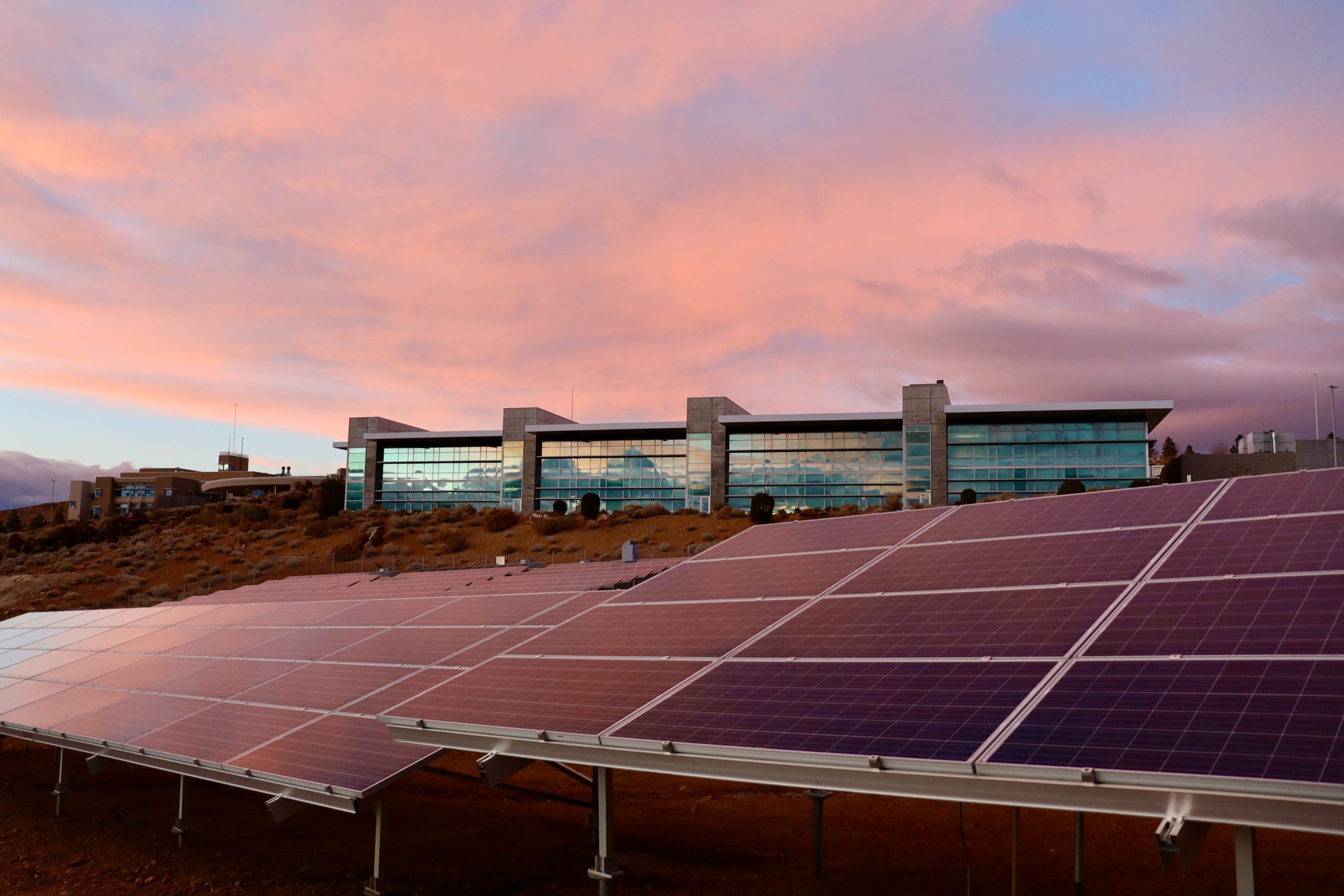
In recent years, solar energy has led the charge in commercial real estate’s shift toward sustainable and renewable energy sources. Solar panels on commercial buildings have become increasingly popular as property managers and owners look for ways to reduce their carbon footprint, save on energy costs, and appeal to environmentally conscious stakeholders. In this blog, we’ll take a closer look at different ways solar energy is being used in commercial real estate and the benefits it brings.
Three Ways Solar Energy is Being Used on Commercial Properties:
1. On-Site Generation
The most common way to harness solar energy on commercial real estate properties is through on-site generation. This approach involves buying a solar panel system and installing it directly on the property where the power will be used, rather than importing energy from a distribution grid. Electricity is then generated and goes straight to the building to be utilized or it goes to on-sight batteries where it’s stored for later use.
On-site generation reduces the need for traditional electricity, in turn saving building owners on energy costs. This approach is the most hands-on, with all of the utilities being in one spot, controlled and maintained by the property owner. Many building owners like this option because they have access to everything necessary and don’t have to answer to a third party. The downside is the cost of buying an entire system can be expensive, which will deter some buyers.
2. Power Purchase Agreements (PPAs)
Another popular option among solar energy consumers is a Power Purchase Agreement, or PPA. It is an arrangement between the buyer and a third-party company that installs, owns and operates the solar system for the property owner either on or off-site. There is no upfront cost; under PPA, the buyer agrees to purchase the generated electricity at a much lower rate than traditional electricity for a determined amount of time.
PPAs are a great option for those in the commercial real estate industry to take advantage of solar energy. It doesn’t require the hands-on attention that on-site generation does, giving property owners or managers more time to focus on other things.
3. Community Solar
Community solar is a newer concept in which multiple building owners come together to share the costs and benefits of a single solar installation. This concept is also referred to as a “solar garden” or “shared solar.” This gives smaller property owners and those without suitable roof space access to solar energy and its benefits. Community solar operations can be anywhere there is enough room for multiple panels, most often large rooftops or fields.
Many community solar programs then give property owners the chance to either buy or lease the number of solar panels they need at a central location. Participating in a community solar program provides property owners the opportunity to benefit from renewable energy without taking on a large financial risk.
Where is the Best Place to Put Solar Panels?
After determining the best options for what works best for a property or business, the next decision is deciding where to put the panels. There are a lot of alternatives available, but these three are the most popular:
1. Rooftops
A solar panel installation on the rooftop of the building itself is the most popular option. Rooftops typically offer great access to sunlight, which makes them the ideal spot for solar panels. Solar panels can also help protect rooftops from the sun’s UV rays, which can protect and prolong the life of the roof.
2. Parking Lots
Another option for a commercial real estate installation is placing solar panels on carports or parking structures. Panels can be easily installed on existing carports or parking lots. Structures can also be built to serve as dual-purpose parking structures and solar panel mounts. Solar carports or parking lots are an efficient way to incorporate solar panels into your renewable energy plans while also providing shade and protection for vehicles.
3. Mounted in the Ground
Ground-mounted solar systems are another option for solar panel installation. These function similarly to rooftop systems, except they are installed at ground level. They are typically mounted to posts driven in the ground and then placed at the best angle to maximize sunlight absorption. This is ideal for properties with available land that don’t like the thought of panels lining their rooftops.
Benefits of Solar Energy
Some of the benefits of solar energy for commercial real estate include reduced cost, increased efficiency and improved environmental sustainability. By reducing the need for traditional electricity, solar energy can significantly reduce a building’s energy costs. There is almost no maintenance involved, sunshine is free and there aren’t any transmission costs. Solar energy systems also generate more electricity per square foot of panels compared to traditional, grid-based systems, making them ideal for commercial real estate. Because solar energy is a clean, renewable source of energy that doesn’t emit harmful greenhouse gases, it also reduces the user’s carbon footprint, which is good for the environment.
As a result, solar energy systems can also increase property values. Commercial real estate investors are more and more interested in buildings that are both environmentally friendly and cost-effective. Solar energy addresses both, making properties with solar more attractive to potential buyers and renters.
As technology continues to advance and the demand for renewable energy grows, the use of solar energy in commercial real estate is expected to increase.
If you are looking to invest in commercial real estate, Landmark Title is here to help with all your title and escrow needs. If you have questions about our services or need assistance with a real estate transaction, visit our website to contact one of our branches or to learn more.